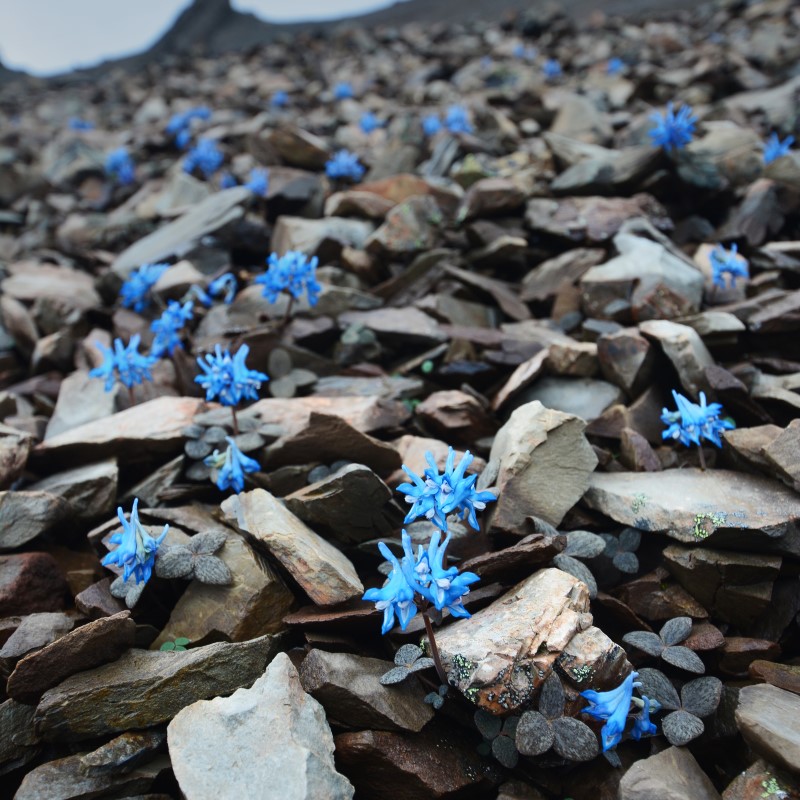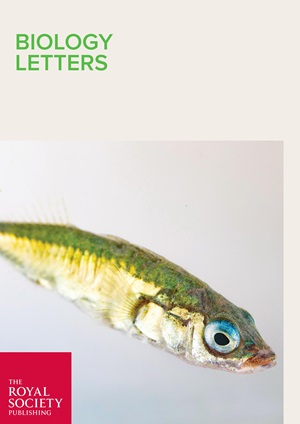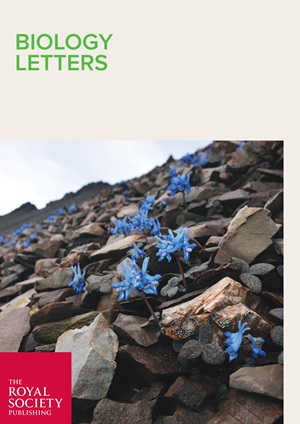Biology Letters caught up with some of our authors whose images made it onto our cover to find out what has happened since then.

Marion Nicolaus, Apu Ramesh and Jakob Gismann talked to us about their April 2023 cover and their article “Mesocosm experiment reveals scale dependence of movement tendencies in sticklebacks”
“We are part of a new research group at the University of Groningen, The Netherlands, headed by Dr. Marion Nicolaus. This study was conducted by two PhD students, Apu Ramesh and Jakob Gismann, and it was one of our pioneering studies using our large RFID (radio-frequency identification) mesocosm system, where we study stickleback behaviour over large spatial and temporal scales. Sticklebacks are regarded as a classical model organism in evolutionary biology and there is a wealth of knowledge available. However, with regards to animal behaviour, and especially the recognition of individual differences in behaviour, many exciting questions remain. One topical question is which role behaviour plays in regard to species’ reaction to recent human-induced changes.
at the University of Groningen, The Netherlands, headed by Dr. Marion Nicolaus. This study was conducted by two PhD students, Apu Ramesh and Jakob Gismann, and it was one of our pioneering studies using our large RFID (radio-frequency identification) mesocosm system, where we study stickleback behaviour over large spatial and temporal scales. Sticklebacks are regarded as a classical model organism in evolutionary biology and there is a wealth of knowledge available. However, with regards to animal behaviour, and especially the recognition of individual differences in behaviour, many exciting questions remain. One topical question is which role behaviour plays in regard to species’ reaction to recent human-induced changes.
We compared movement behaviours between a migratory stickleback population and a population that has recently been isolated into freshwater habitats in the northern Netherlands. These isolated ‘resident’ populations differ in a number of phenotypic and behavioral characteristics, and in our article we tested fish in our mesocosm for migration-like behaviours. As expected, we found that residents seem to have lost their tendency for migratory behaviours. Interestingly, we found that residents and migrants don’t differ in movement behaviours on smaller spatial scales but only when considering movement across the full mesocosm system. In the lab, it is the norm to homogenize and remove as many sources of variation as possible in order to get a precise understanding of the behaviour in question. However, this comes at the cost of generalization, in this case, the role that behaviour plays under more complex ecological conditions in the wild. In this study, we also show the importance of using biologically-relevant experimental setups like our mesocosm system, which can act as a stepping stone between the lab and the wild. Our findings are not only important for our understanding about the (rapid) evolution of behaviours related to migration across these populations, they also inform the water authorities of potential consequences of conservation methods that may be applied in the field.
The picture that made it onto the cover was taken by one of our students (Ben Kawam), who patiently sat in front of a small aquarium taking hundreds of pictures of freely swimming fish and managed to take some spectacular images. To capture the image in such detail, he used white plastic plates behind the fish tank that were backlit by 2 lamps, creating a diffused light strong enough to get close-ups of the fish without stressing them. Unfortunately, many photographs of fish are taken outside of the water, or worse, when fish are dead. In our lab we try to study behaviours under conditions that resemble the fish’s natural habitats and thus having pictures of freely swimming fish seemed very fitting. Stickleback seem inconspicuous at first, but on a second look have spectacular coloration, even outside of the breeding season.
Having our picture featured on the cover was a great way to advertise our research, for example on social media, especially since for one of us, this was the first first-authored paper. Being on the cover is excellent for exposure of our small, but growing group (‘The Sticklelab’), and presents the often-overlooked beauty of the organism that we work with. We also hope that this captures the attention of readers to take a look at our experiment and the system we have established for this study. The cover picture provides great motivation to write up past experiments and to continue with exciting new studies in the mesocosm on, for example, the role of behaviour in speciation.”
Yang Niu spoke to us about their May 2023 cover and article “Camouflaged plants are shorter than non-camouflaged plants in the alpine zone”
“I am an evolutionary ecologist working on the evolution of plant coloration from the perspective of plant-animal interactions. Plant coloration generally serves two main functions: attraction (to pollinators) and defense (against herbivores). Camouflage, a type of defensive coloration, has been found to be effective in plants over the last decade.
on the evolution of plant coloration from the perspective of plant-animal interactions. Plant coloration generally serves two main functions: attraction (to pollinators) and defense (against herbivores). Camouflage, a type of defensive coloration, has been found to be effective in plants over the last decade.
Camouflage may be more effective in smaller plants, as they are easier to blend in with their surroundings. Smaller plants are also less likely to survive and reproduce after being attacked by herbivores, and thus may face higher selection pressure to evolve camouflage. Therefore, logically, camouflage is more likely to evolve in short or small plants, but this prediction has not yet been tested.
Based on an alpine plant list from the Hengduan Mountains in southwestern China, we measured the heights of 2915 individual plants from 621 species from herbarium specimens. We found that camouflaged plants were indeed significantly shorter than non-camouflaged ones. Furthermore, we observed that plant height decreased with increasing elevation, but only in non-camouflaged plants, not in camouflaged ones.
The cover photo was taken at Baima Snow Mountain in northwestern Yunnan province at an altitude of approximately 4600m above sea level, when the camouflaged plant Corydalis hemidicentra was displaying its beautiful blue flowers. Based on my experience, camouflaged plants without flowers are not likely to be chosen as cover images, as people may not easily notice them. I am glad this photo was chosen for the latest cover.
My colleagues and I are currently investigating the molecular mechanisms responsible for this special type of coloration and continuing to study the evolution of camouflage.”
Find out more about submitting to Biology Letters on our website or by contacting our editorial office.
Image credits
April 2023 cover image: Three-spined stickleback (Gasterosteus aculeatus) male. Photo credit: Ben Kawam.
Top image and May 2023 cover image: Corydalis hemidicentra, SW China. Photo credit: Yang Niu.




